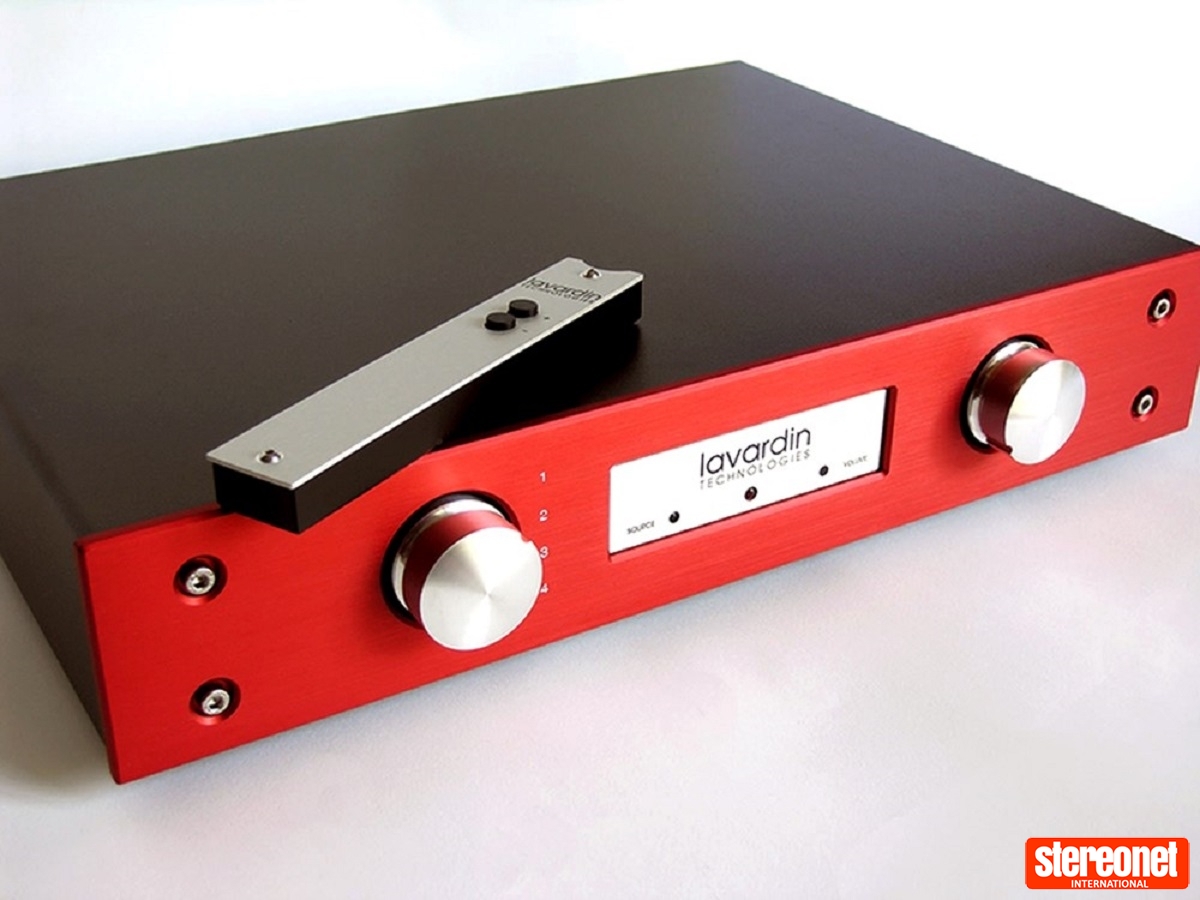In today’s shallow and superficial world – where how something looks counts for more than what it does – Lavardin’s ISx Reference integrated amplifier starts with a distinct disadvantage. At first glance, it appears to be nothing special and looks much like any other half-decent modern amplifier.
However, listening with your eyes is risky at the best of times. So, don’t be fooled. This is an exceptional design among the best I have heard, regardless of price, no less. It punches well above its weight and sounds much better than specifications might suggest.
It’s neither large nor flashy; the ISx Reference weighs a mere 6.6kg and measures just 430x320x80mm. With 50W of output power claimed into 8 ohms and 104W into 4, with total harmonic distortion quoted at 0.005% at full output, it won’t impress those who judge products by size and weight or how hot they get. Indeed, it only draws 32W while idling, with a maximum 180W at full stretch; everyone knows that a ‘proper’ amp needs half a kilowatt!
Build quality is perfectly fine for its price, and the optional red-anodised front panel looks quite snazzy. The non-magnetic casework is made of aluminium, and there are four line inputs with the option of a moving magnet phono stage for an additional £599; moving coil will be available by summer 2023 for £1,039 extra. Remote volume control is not included but can be added for £279, which seems a bit steep. The simplicity of the ISx Reference is beneficial to sound quality; the signal path is short and clean, with high-quality sealed relays used for input switching.
Lavardin says the ISx Reference gives listeners ‘more than an idea’ of their flagship ITx and ITx 20 models at a much-reduced price. Given how good the Reference sounds, I wonder how much better the IT series might be? Get Behind Me, Satan!

The listening
Before the ISx Reference joined my reference system, I had been listening to and thoroughly enjoying Leben’s CS600X, a very nice Japanese tube amplifier based around EL-34s with around 30W per channel of thermionic power. Subjectively, Leben’s effortless clarity and transparency, plus lovely spatial depth, proved highly alluring. I own several tube and transistor amps, but none of them quite equalled Leben’s magic. The CS600X was effortlessly true and wholly natural. In comparison, my other amps sounded slightly thicker and more contained, lacking the Leben’s graceful lucidity and unforced 3D clarity…
On firing up this Lavardin, I immediately heard all the key benefits and qualities I admired in the Leben. Indeed, if anything, the Reference struck me as offering enhanced spatial depth, plus greater clarity, albeit with the Leben coming across as slightly more liquid and mellifluous. Of course, being a tube amp, the CS600X is transformer-coupled to the loudspeakers, and this, I believe, helps sweeten up the sound, but there wasn’t a huge amount in it.
Given that this is a reasonably small and light, low-powered solid-state amplifier, the ISx Reference sounds remarkably full-bodied and dynamic. It really projects, creating a very holographic ‘out of the speaker boxes’ sort of sound. Subtle microdynamics are tellingly reproduced. It sounds eventful, too like there’s more happening in the music. Even on familiar tracks, you think you know well, you suddenly hear voices and instruments not noticed before. The music seems more expressive and varied. There’s simply more going on; more to hear.
Indeed there is a distinct rightness about the sound of the Lavardin an impressive consistency. Play a compilation album of tracks by different people recorded in different places and at different times, and the Reference nearly always reproduces each one convincingly. It’s responsive to specific differences but isn’t caught out by, say, a strong and heavy bass line that might, with a lesser amp, lead to low-frequency boom. The sound is blessedly free from harshness, too remarkably so for a solid-state amp.
As a result, I found the ISx Reference impressively informative yet smooth and relaxing to listen to. It always seemed in control, sounding competent without being overly regimented. That said, it can also deliver a robust and purposeful sort of sound it is not rosy or over-forgiving. With slightly more power than the Leben CS600X, the ISx Reference sounds cleaner when pushed hard. While I would not describe its presentation as lush or euphonic, a nice smooth, silky sheen to the top end ensures voices sound full and rich rather than edgy.

Bass quality is very good firm yet full-bodied, clean, and very tuneful. Recordings that can sound bass-heavy with other amplifiers came over as clear and well-defined. The bottom end of the frequency spectrum always felt ample and deep; despite sounding full and weighty, this little integrated amplifier delivers clean and nimble low frequencies.
I really liked the way that Kate Bush‘s Hounds of Love an album that I have never found easy to reproduce was handled. The ISx Reference didn’t change the basic sound of the recording – nor should it – but it made the dryness and deadness on tracks like Running Up That Hill seem less irksome. Did Kate really want such a desiccated sound that lacks brilliance and sparkle? I can’t say. But via the ISx Reference, the dryness seemed more like an artistic choice than the unwanted limitations of studio electronics and the multi-track recording process.
Playing Gluck‘s opera Orfeo ed Euridice on Sony/Vivarte, the dynamic projection of the voices was extremely impressive. I was shocked by the declamatory power of Orfeo’s opening cry of ‘Euridice!’ and the formidable way the voice projected after the hushed introduction by the chorus.
Likewise, the explosive dynamics of Shostakovich‘s 14th Prelude (Shostakovich 24 Preludes and Fuguesby Alexander Melnikov, piano) almost made me jump. Such powerful trills! Many would think you need a hugely powerful amplifier to recreate such strong dynamics rather than a modest claimed 50 watts of power. Interestingly, when I checked sound pressure levels, the sound wasn’t nearly as loud as I thought. It just sounded powerful, subjectively creating the impression of dynamics and scale. The ISx Reference is good at projecting a vibrant and energetic sense of attack in a commanding, authoritative way.
It also proved highly adept at replicating the sound of applause something not easy to reproduce convincingly. Often applause sounds dry and clipped, but through the Lavardin, it was nicely tactile and crisp, without tonal hardness or harshness. Percussion displayed exceptional speed and lack of overhang. I heard crisp attack and fast release on snare drums and cymbals allied to smooth natural timbres. Definition was fully maintained during soft passages. As a result, I found that I could play music quietly without it sounding recessed.
The aforementioned optional phono stage is superb, which is probably why it’s more expensive than some rivals. My review sample came fitted with a moving magnet input, but as I had a moving coil pickup, I employed a Music First Audio step-up transformer. This combination proved excellent, the resulting sound being outstandingly clean and dynamic.
In general use, this amplifier is very quiet. There’s a very slight power transformer buzz and a tiny amount of low-level hum on the phono stage. Still, it’s nothing to worry about you won’t hear anything while playing LPs unless the output of the cartridge is unusually low.
The verdict
A few months back, I saw a dealer list a secondhand Lavardin for sale on eBay with the cryptic note, “Time to stop messing about this is what you want…” That neatly sums up the ISx Reference. While not cheap, it represents surprisingly good value considering what it does. It can easily be compared to amps costing two or three times as much in terms of sound quality. Subjectively, it is amazingly dynamic and powerful for a compact integrated despite just 50W, it stands its ground against far bigger amplifiers.
I also love its sheer practicality it’s so comfortable to live with because it’s modest in size, light in weight, and doesn’t draw an excessive amount of juice from the mains or run worryingly hot. It’s simple and basic; it has everything you need and nothing you don’t.
While reviewing for StereoNET over the past few years, I have listened to many very nice amplifiers, many of which I could happily live with and the Lavardin joins the best of them. With this amplifier, it’s not so much a question of whether I can live with it as can I live without it? It really is that good.

Recensito da stereonet.com


